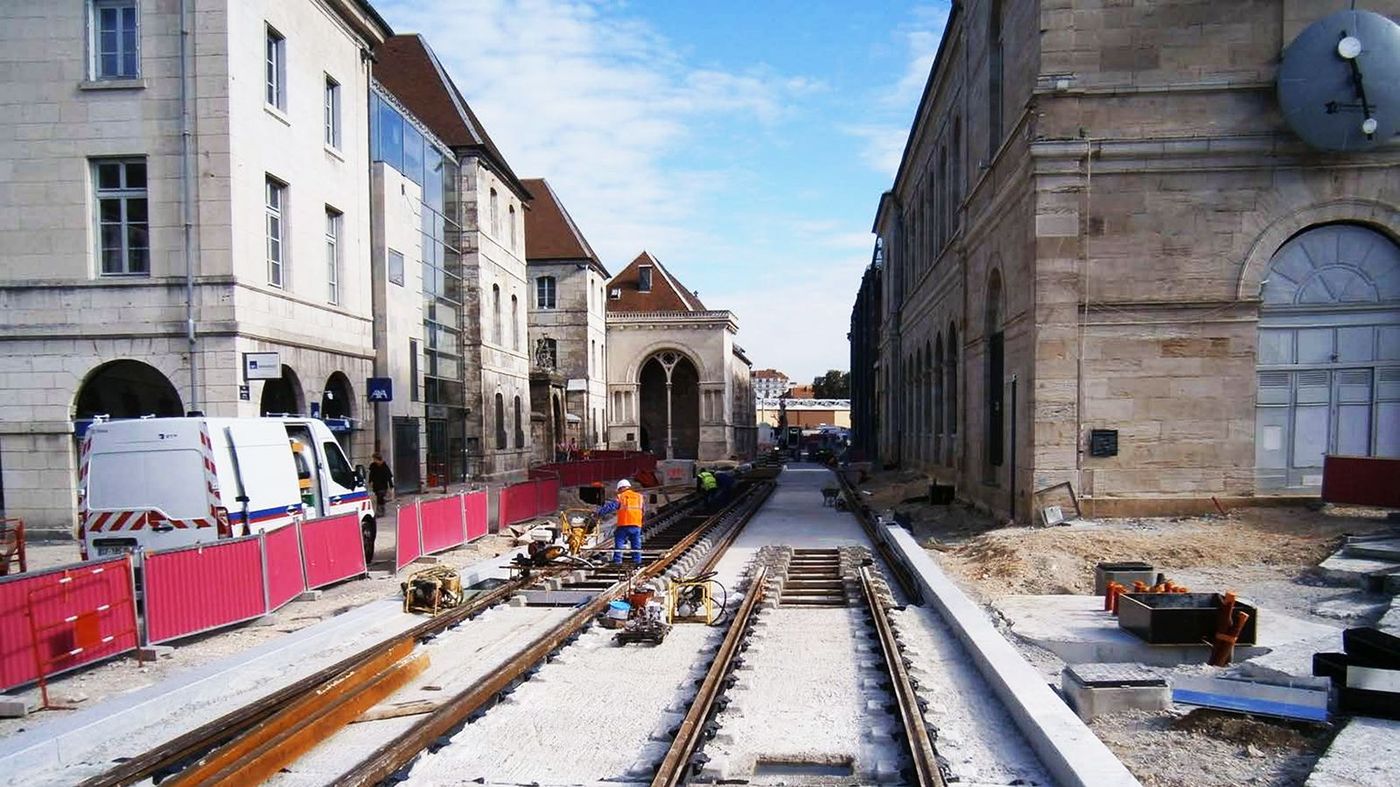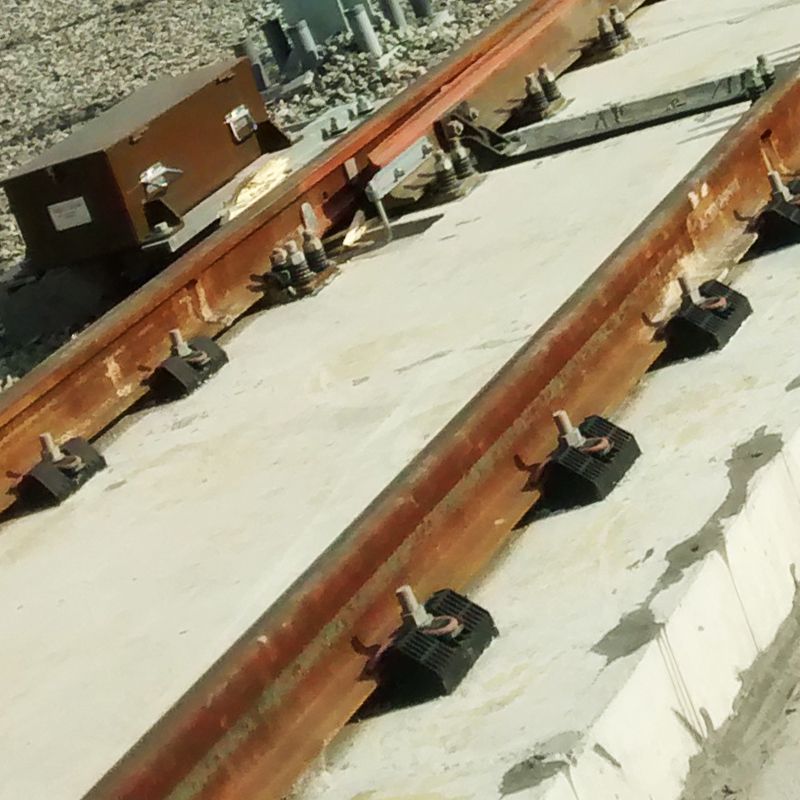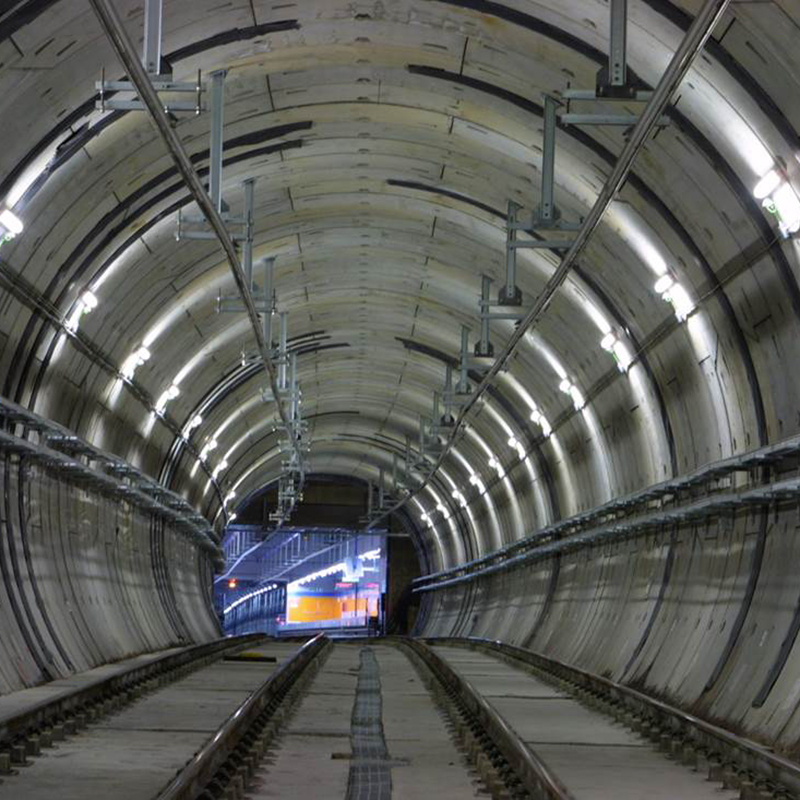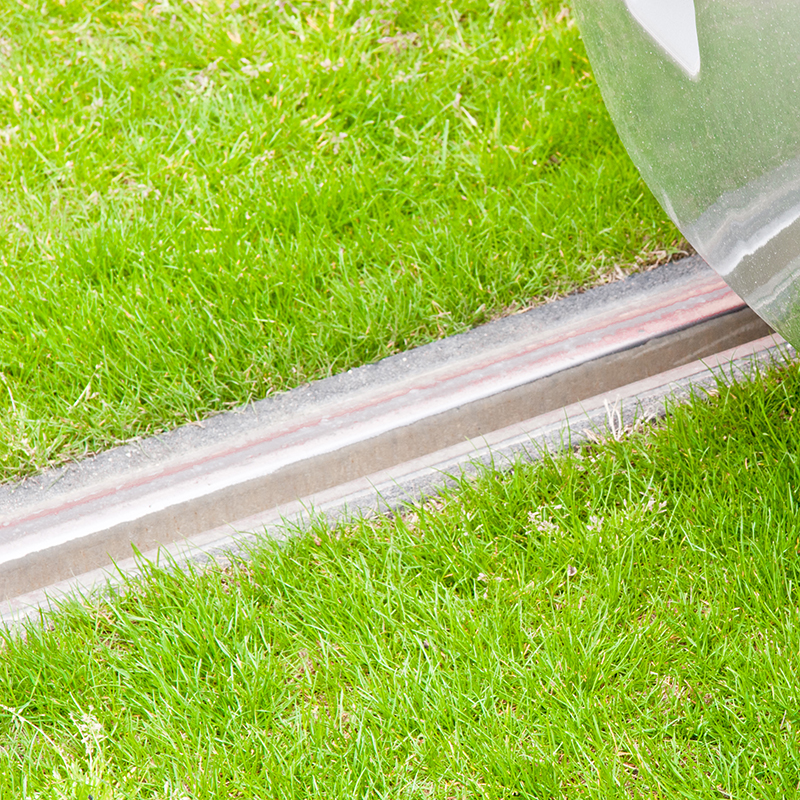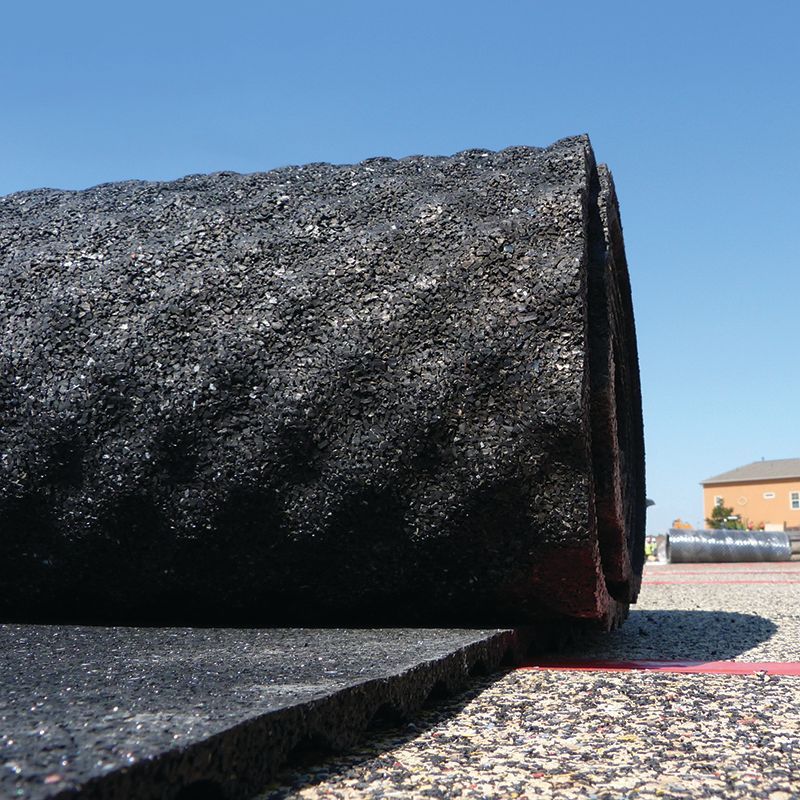To respond to these challenging requirements, Pandrol developed a new composite plastic baseplate. This baseplate had to be designed that could be embedded into fresh concrete or by wet pour methods. This would be more cost effective than traditional castings and would be easier to handle and install on the track. The solution was to develop the SEE-SD, a rail fastening system which provides adequate resilience (stiffness) to attenuate to the concrete slab and enables large vertical adjustments to the rail position. The innovative air evacuation system prevents trapped air entering underneath the baseplate. The SEE-SD plastic baseplate has a special feature of vents and channels that optimise insertion into concrete and ensures excellent resistance to lateral forces. It also provides a lightweight solution for handling/installation and can be pre-assembled to further simplify installation operations.
Once the system was developed, rigorous tests were carried out by our R&D team to demonstrate to the customer that the solution could meet both performance and cost requirements. The project required technical validation of the system, including a complete and fully tested assessment of the recommended solution.
The innovative SEE-SD rail fastening is designed to give a typical vertical dynamic stiffness of around 60 MN/m. It offers a wide range of pad stiffness levels, making it suitable for meeting noise and vibration mitigation requirements on this project. It also meets all requirements of the latest updates of EN 13146 and EN 13481-5:2012 standards, for category B (metro applications). The SEE-SD system maximises the use of common components, for example, an anchoring solution designing to facilitate installation and future maintenance operations. In addition, its performance relating to electrical insulation complies with EN 13146-5:2012.
The SEE-SD was designed for use with the SD clip, with its screwed design that optimises track construction costs and provides very high technical performance. SD stands for ‘safely driven’ which relates to the controlled clip guidance from the ‘parked’ to the ‘in-service’ position.
SD insulated blocks are designed to offer lateral adjustment of the track gauge in increments of 1.25 mm. The method to adjust the gauge is managed simply by adapting the insulated block combination. The baseplates used in the SEE-SD design are made from glass fibre reinforced polyamide material in order to provide maximum resistance to lateral loads. The baseplate is not ‘laid’ on the concrete but ‘anchored’ and integrated into the slab. There is consequently no risk of slippage. The stress level in the screws is significantly reduced even on tight curves, as a result of the anchoring system, which is based on the use of two screws.
